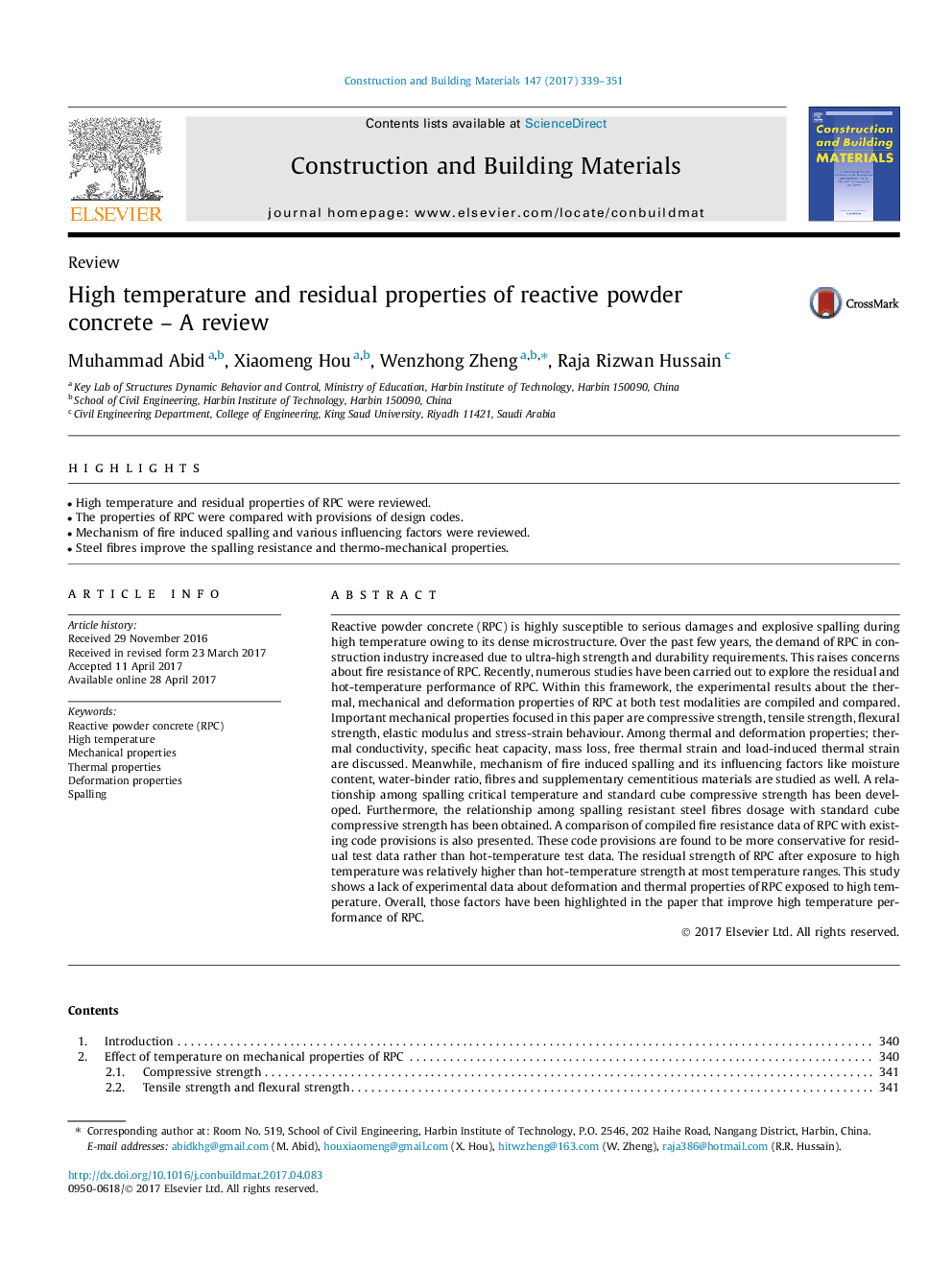| Article ID | Journal | Published Year | Pages | File Type |
|---|---|---|---|---|
| 6480450 | Construction and Building Materials | 2017 | 13 Pages |
â¢High temperature and residual properties of RPC were reviewed.â¢The properties of RPC were compared with provisions of design codes.â¢Mechanism of fire induced spalling and various influencing factors were reviewed.â¢Steel fibres improve the spalling resistance and thermo-mechanical properties.
Reactive powder concrete (RPC) is highly susceptible to serious damages and explosive spalling during high temperature owing to its dense microstructure. Over the past few years, the demand of RPC in construction industry increased due to ultra-high strength and durability requirements. This raises concerns about fire resistance of RPC. Recently, numerous studies have been carried out to explore the residual and hot-temperature performance of RPC. Within this framework, the experimental results about the thermal, mechanical and deformation properties of RPC at both test modalities are compiled and compared. Important mechanical properties focused in this paper are compressive strength, tensile strength, flexural strength, elastic modulus and stress-strain behaviour. Among thermal and deformation properties; thermal conductivity, specific heat capacity, mass loss, free thermal strain and load-induced thermal strain are discussed. Meanwhile, mechanism of fire induced spalling and its influencing factors like moisture content, water-binder ratio, fibres and supplementary cementitious materials are studied as well. A relationship among spalling critical temperature and standard cube compressive strength has been developed. Furthermore, the relationship among spalling resistant steel fibres dosage with standard cube compressive strength has been obtained. A comparison of compiled fire resistance data of RPC with existing code provisions is also presented. These code provisions are found to be more conservative for residual test data rather than hot-temperature test data. The residual strength of RPC after exposure to high temperature was relatively higher than hot-temperature strength at most temperature ranges. This study shows a lack of experimental data about deformation and thermal properties of RPC exposed to high temperature. Overall, those factors have been highlighted in the paper that improve high temperature performance of RPC.
